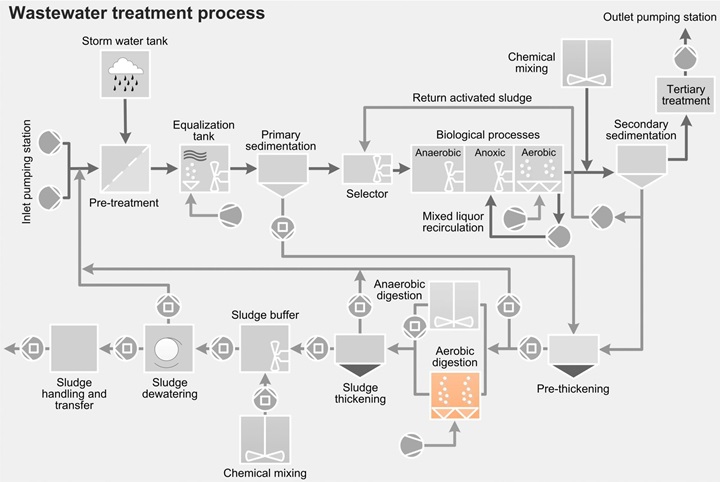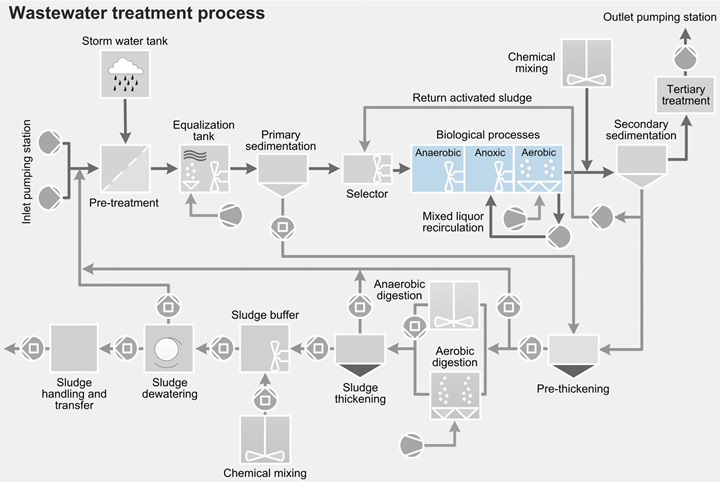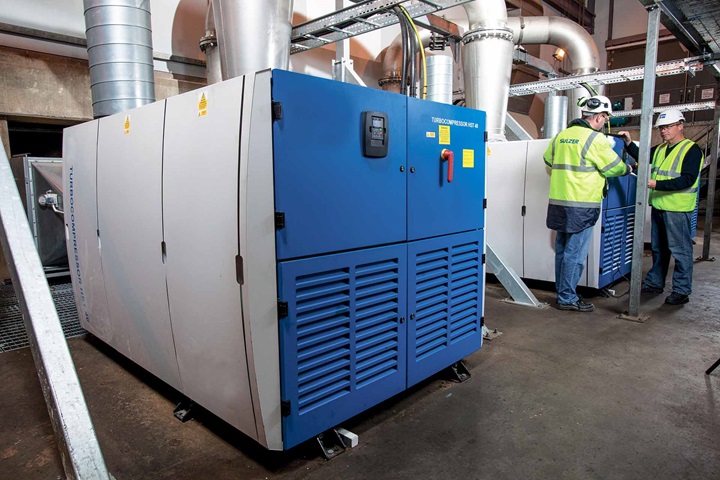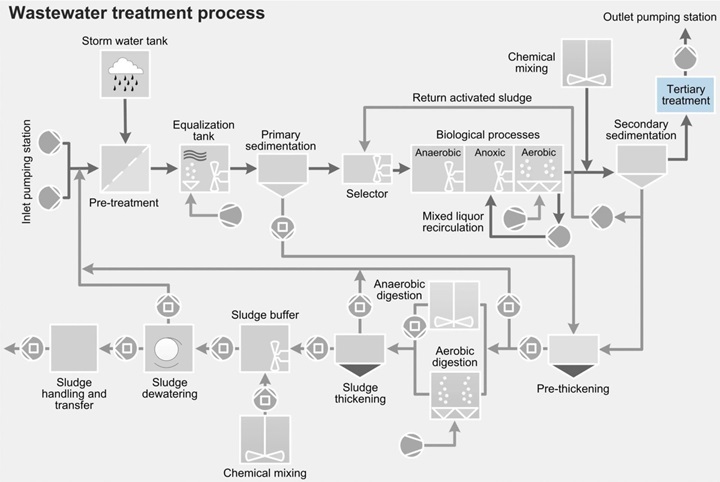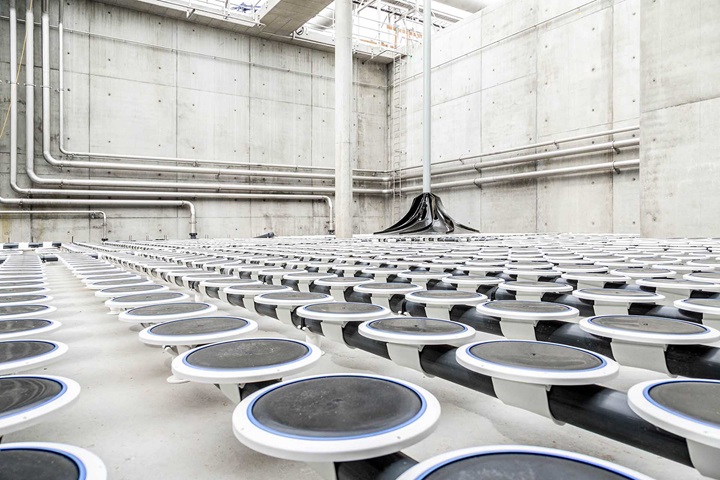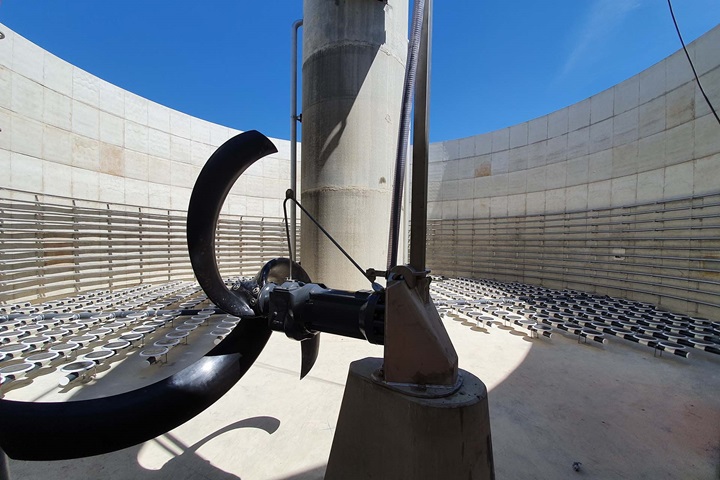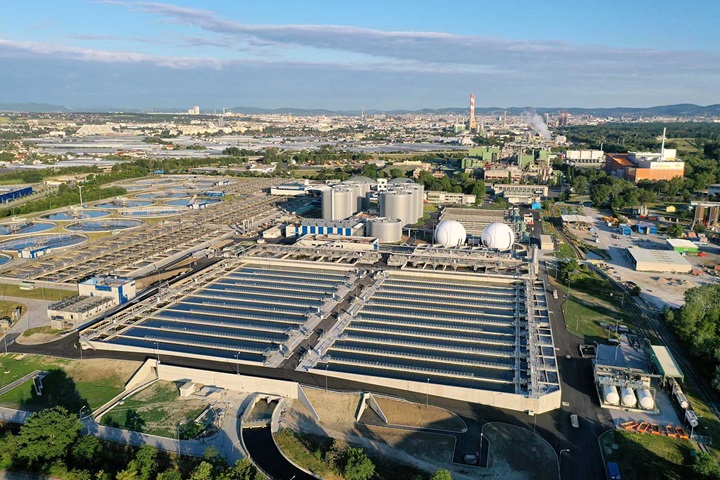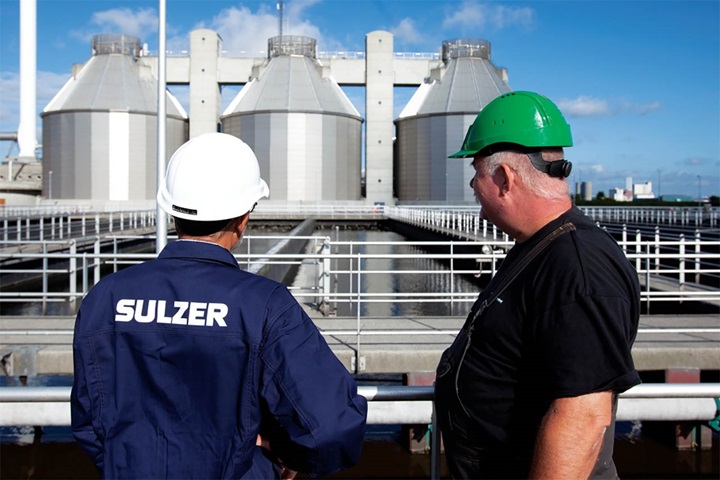- Reliable and long-lasting
- Low pressure drops and therefore higher efficiency
- Possibility of future increase in aeration capacity
- Quick and easy installation
- Flexible layout design
- High temperature endurance
- Suitable for aggressive wastewater
Disc diffuser system type ABS
A reliable solution for efficient oxygen transfer
The reliable disk diffuser system is one of the world’s most widely-installed fine-bubble aeration systems, available in four alternative diffuser models. Preassembled diffuser elements enable fast and easy installation. Retrofits are available to increase aeration efficiency.
- Aeration of municipal wastewater
- Aeration of industrial wastewater, with some restrictions
Main design features
All diffusers have a built-in non-return valve which provides additional safety to the treatment process by preventing sludge infiltration into the aeration piping system when the air flow is interrupted. The KKI215, and PRK/PIK300 diffusers are interchangeable for retrofits, offering high flexibility.
Diffusers with EPDM rubber membrane discs:
PIK300 fine-bubble
- Polypropylene main body and an antifriction ring to protect the membrane
- Suitable for both continuous and non-continuous aeration processes
PRK300 fine-bubble
- Strong main body, making it suitable for SBR, MBR, and MBBR processes
- Antifriction ring protects the membrane
- PRF300 retrofit for upgrading 215 mm diffusers to more efficient systems
KKI215 fine-bubble
- Suitable for both continuous and non-continuous aeration processes
- Special support for use in deep basin applications, in water up to 15 m deep
Sucoflow DS 20 fine-bubble
- Ideal for high-density and retrievable aeration systems
- Easy-to-fit thread connection
Key characteristics
Diffuser diameter |
PIK300, PRK300: 336 mm KKI215: 215 mm Sucoflow DS 20: 500 mm |
|
Membrane surface area |
KKI: 0.025 m² PIK, PRK: 0.060 m² Sucoflow DS 20: 0.183 m² |
Operating range (+20°C; 1 013 mbar) |
KKI215: 0.5–4 m³/h PIK300, PRK300: 1.5–8 m³/h Sucoflow DS 20: 1–15 m³/h |
Max. operating temperature: |
PRK300, KKI215: 80°C PIK300, DS 20: 100°C |
